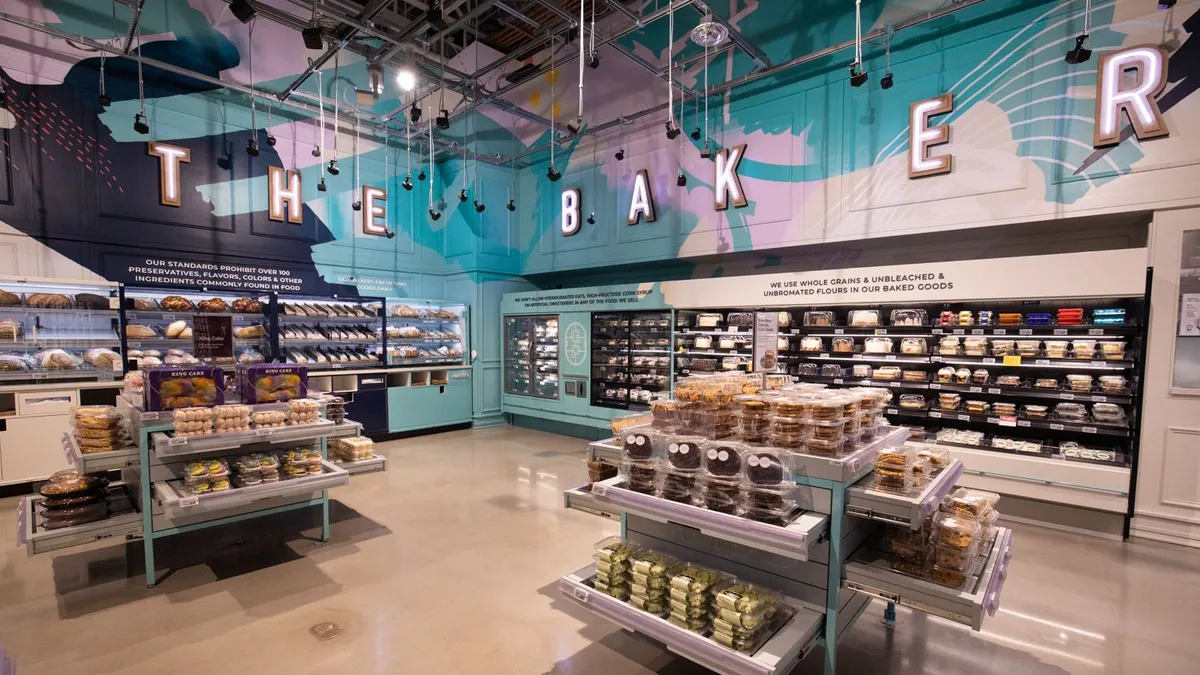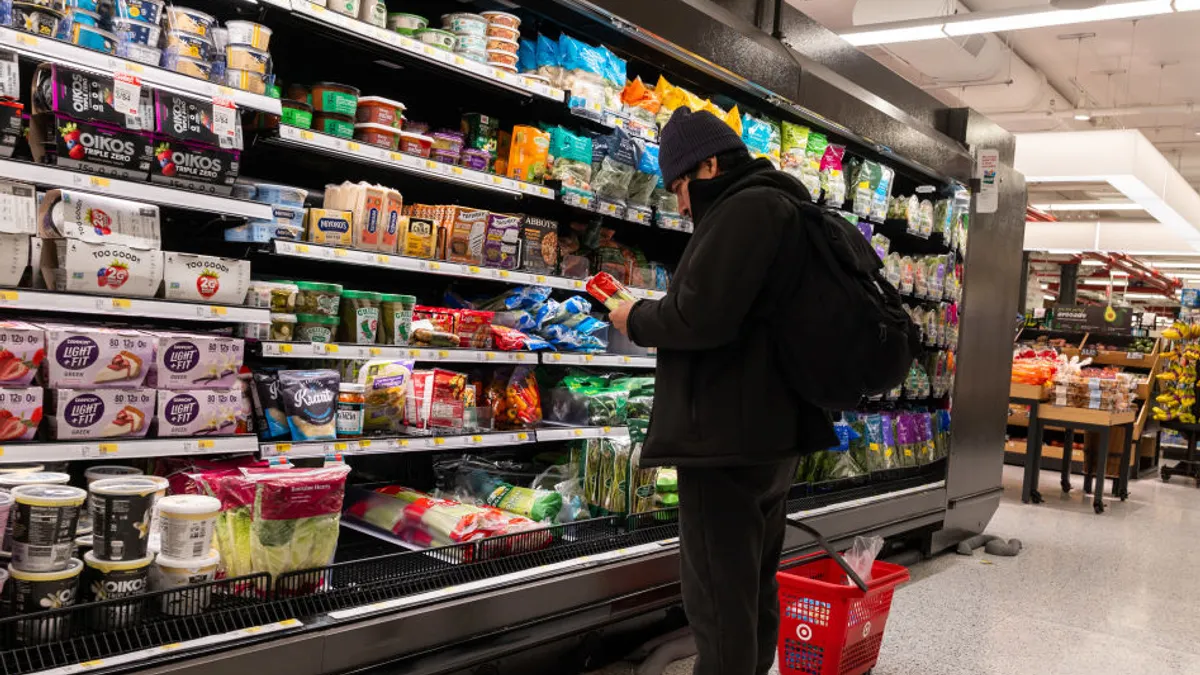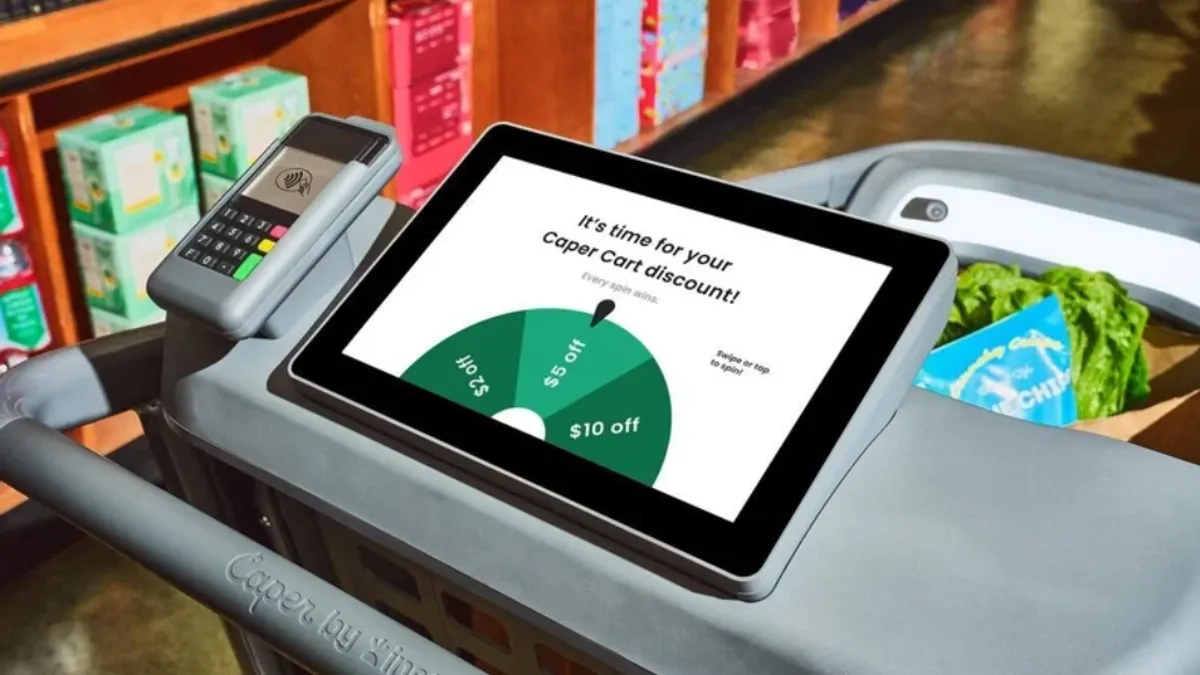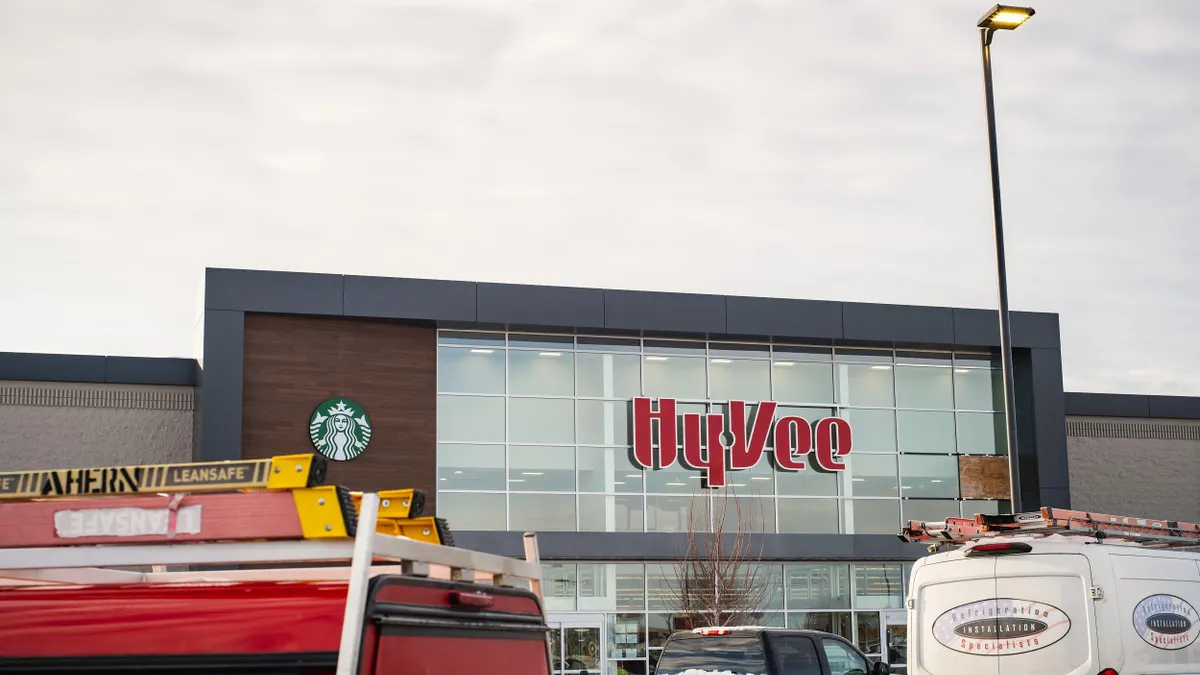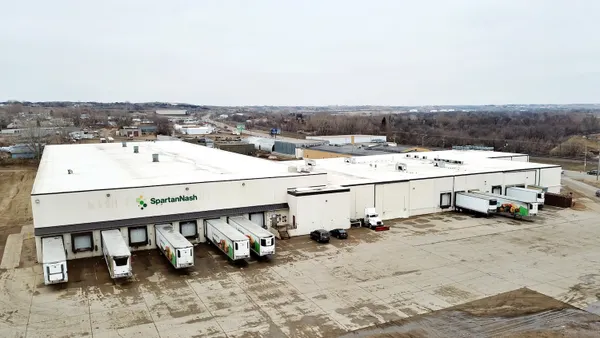With its neon signs and pops of teal and mustard yellow, the newly reopened Whole Foods Market in Washington, D.C.’s Glover Park neighborhood is so gorgeous that it’s almost possible to miss the hundreds of small cameras hanging down from the ceiling.
But look up and there they are — the digital tentacles that help power parent company Amazon's Just Walk Out cashier-less technology that’s been newly added to the natural and organic store at 2323 Wisconsin Ave. NW.
The Glover Park store, which reopened on Feb. 23 after a nearly five-year-long closure, marks the first Whole Foods to offer Just Walk Out. A second Whole Foods in Sherman Oaks, California, is slated to roll out the technology later this year.
Amazon had previously brought Just Walk Out to its Amazon Go stores and some of its Amazon Fresh locations and has licensed it to retailers, including U.K. grocery chain Sainsbury’s, along with stadiums and hospitality companies.
Its addition to Whole Foods is not surprising: Amazon has used Whole Foods as a testing ground of sorts after it bought the chain in 2017. Updates like adding box- and label-free return services, the palm payment tool Amazon One and now Just Walk Out technology have, for better or worse, infused the specialty grocer with Amazon's leading-edge technology. The New York Times recently called it the "Amazonification of Whole Foods."
When I visited the Glover Park store for the first time last Tuesday, I was struck by all the ways the store weaves together the signature elements of Whole Foods — like its emphasis on local products and high sourcing standards — with digital innovations, like Just Walk Out and Amazon One, from its parent company.
How the tech impacts the shop
At 21,500 square feet, the Glover Park store is nearly three times the Amazon Fresh store that recently opened in the Logan Circle neighborhood. I'm initially stunned by the fact that Amazon is now able to expand cashierless technology beyond convenience stores to a full-size grocery venue.
I'm first confronted by gates just inside the entrance where I must pick my method for entry and then exit: Scan a code in the Amazon or Whole Foods app, use Amazon One with a palm hover, or insert a credit or debit card linked to my Amazon account to access the Just Walk Out experience. Or, walk through a separate gate for self-checkout.
The entry requirements give off a vibe of exclusivity, but I doubt that will be a turn-off for Whole Foods' clientele.
I used Just Walk Out once before when the Amazon Fresh store opened in the city's Logan Circle neighborhood last summer, but I still have trouble finding the in-app code. One of the two workers stationed at the entrance helps me out and asks if I want to get set up with Amazon One. Not today, thanks.
Along with the workers at the entrance, employees are also stationed at the gates toward the back of the store, which lead to the parking garage, and near the self-checkout stations. While tech innovations are often promoted as ways to replace or free up human workers, this store is a good reminder that workers might still need to help customers with the learning curve that comes with tech-driven features.
As I travel the store, I notice the subtle changes to the shopping experience prompted by Just Walk Out. At the salad and hot food bars, signs say containers are priced by size instead of by weight. Salad boxes start at $9.99 for a small box while soup containers start at $5.99. It’s a similar situation over at the self-serve coffee station.
At "The Cellar," a room filled with wine and beer, a worker at the entrance verifies shoppers' ages before they enter. It reminds me of getting carded before entering a club or bar, and I don't feel like digging my wallet and ID out of my bag at this point to browse wine I wasn't planning to buy. Having the employee at the entrance seems to discourage browsing, but the store has found other opportunities to fuel discovery.
Come for the innovation, stay for the discovery
Grocers and convenience stores have turned to cashierless technology as a way to speed up shoppers' trips, but this Whole Foods store doesn't seem to want shoppers to rush through.
The store layout is designed to draw people in. Dairy and cheese are located in the far back right corner. "The Cellar" is also at the back of the store, as is the gorgeous bakery section with its turquoise walls.
As grocers renovate their stores to make them more aesthetically attractive, this Whole Foods is going for glam with its splashes of color and neon signs throughout.
In the food hall, the salad and hot food bars are mustard yellow. It's there I spot an eye-catching, red display for local products with signs providing more color with brand storytelling. Throughout the store, tags and shelf talkers spotlight local products.
The store has plenty of signs to call out Whole Foods' sourcing standards to shoppers, like one in the seafood department saying it "only sells sustainable wild-caught and responsibly farmed seafood" and one in the bakery about Whole Foods' standards prohibiting "over 100 preservatives, flavors, colors & other ingredients commonly found in food."
With competitors including Trader Joe's, Giant Food and Safeway located within walking distance, it makes sense for this store to focus on its sourcing standards coupled with the novelty of its tech as key differentiators.
Up ahead, there’s the produce section with packaged lettuce displayed like a wall of greenery with a neon sign above: “Love how it’s grown.” The store feels spacious throughout, but it’s here in the produce area where I'm struck by two things when I look skyward: cameras and skylights.
The skylights and lighting fixtures combined give the store a glow and spotlight the vibrant hues of the fruits and vegetables. The lighting and the colorful elements throughout help keep my gaze focused on the products, distracting me from the cameras overhead.
Overall, the store is beautiful, and I couldn’t help but wonder how the vibrancy of colors and lighting might impact shopper psychology. Is it the visual equivalent of upbeat music clothing stores often use to encourage people to linger and feel good as they shop? With Just Walk Out, it seems even more important to keep people focused on their shopping trip instead of on the cameras overhead. Still, I found it hard at times to shrug off the feeling of constant surveillance.
Anyone else find the tech a tad creepy?
Before I leave, I want to check my receipt, but the screens above the exit and entry gates say I will get it emailed to me at a later time. And I do, roughly four hours later. All of my items are indeed there.
The Just Walk Out process strikes me as efficient for baskets of all sizes, but I can't shake disconcerted feelings. There are some, like the fear I'm accidentally stealing, confusion over how to use the technology and suspicion about whether I’ll be accurately charged, that I expect will fade with continued use of Just Walk Out.
But I don't know if I'll ever be able to fully ignore the cameras. The ceiling height and eye-level aesthetics helped keep them out of view, but their sheer number still struck me as George Orwell's Big Brother watching.
Were other shoppers spooked like I was? On my way out the door, I overhear two people who also used Just Walk Out say they were in awe of how it worked. Outside the store, two shoppers, who agreed to be identified by their first names, told me in interviews their differing takes on Just Walk Out.
Emma, who used self-checkout, told me the cameras didn't jump out: "I was kind of in my zone with my headphones and my grocery list. I didn't notice, to be honest."
Thomas, who had shopped at the store before the renovation and also used self-checkout, said the changes make the store "a little less personal and a little more mechanical."
"Amazon can see what you're buying, what you're doing. I think the controlling of information is just unsettling," Thomas said. "And you would certainly spend more because you no longer stand there and see your amount rung up [at the register]. It's fine. I'm sure it has some convenience."
They both said they would come back. "I plan to — even despite the dystopian nature of it — switch to the credit card so it automatically checks you out," Thomas said.
Something's missing?
In reflecting on my trip to the store, I am reminded of another Whole Foods store in the city that I have frequented for going on eight years. It's struggled with checkout line congestion and just recently put in self-checkout kiosks. However, I've kept coming back for its in-store eateries (the pizza one, especially) and the barista who will fashion custom lattes based on my preferences.
Other Whole Foods stores have offerings like kombucha on tap and in-store eateries. But the Glover Park store doesn't seem to have those same inviting aspects. It has a seating area where shoppers can eat a prepared meal or drink a coffee, though this feels more utilitarian and less personal.
Could added personalization and an elevated grocery dining experience eventually translate over to Just Walk Out? If so, that may be a winning combination. Just don't look up.



